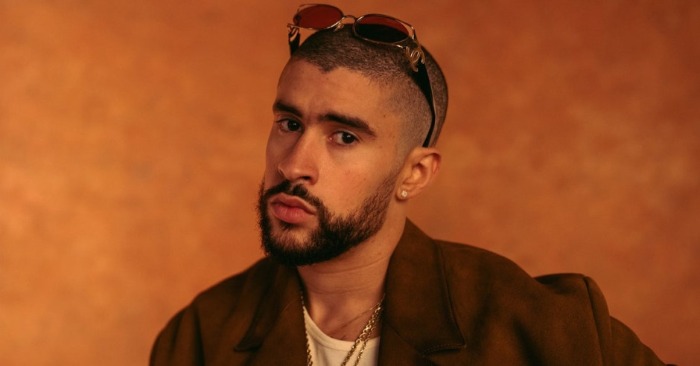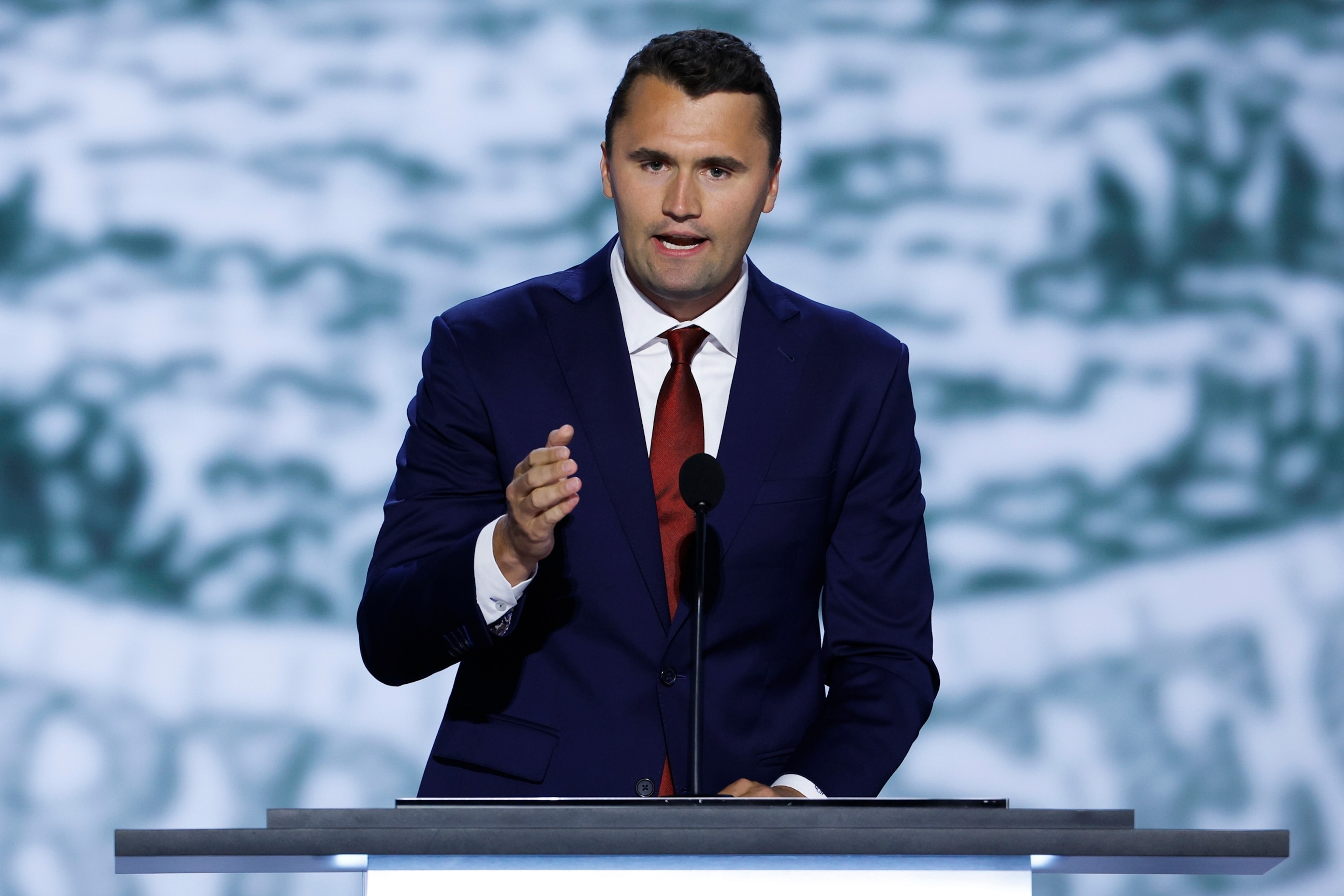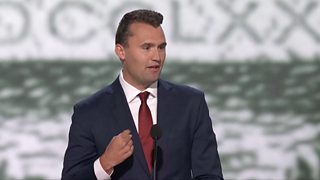BREAKING: Turning Point USA to Launch “All-American Halftime Show” to Rival Super Bowl — In Direct Protest of Bad Bunny Headlining NFL Eventt.ABC
BREAKING: Turning Point USA to Stage ‘All-American Super Bowl Halftime Show’ in Protest of Bad Bunny’s Headlining Performance
In a headline-grabbing move that underscores America’s deepening culture war over sports, music, and national identity, conservative youth organization
The announcement, made via TPUSA’s social media channels and confirmed by founder
“We don’t hate the Super Bowl,” Kirk posted. “We just think it’s time for an option that puts America — and American values — first.”
A Conservative Response to a Cultural Flashpoint
The backlash to Bad Bunny’s rumored Super Bowl headlining slot began earlier this week, when NFL Hall of Famer Eric Dickerson made headlines for suggesting that artists who “don’t love America” shouldn’t be featured on the league’s biggest stage.
Now, Turning Point USA — a group known for its youth-focused conservative activism, campus tours, and vocal opposition to what it views as liberal cultural dominance — is taking that protest a step further.
“If the NFL won’t honor the traditions and values that made football great,” said TPUSA spokesperson Kelly Erwin, “we will.”
Fans Asked to Choose the Music
Rather than pre-selecting artists, TPUSA is inviting fans to
The options appear to be as much about musical genre as they are about ideological signaling. The inclusion of “Worship,” for example, suggests the group is aiming to draw in faith-based audiences who have grown increasingly critical of mainstream pop culture events.
Early voting, according to TPUSA’s post, already shows strong momentum for faith-centered music and country-leaning acts.
While no performers have been officially announced, insiders say several “well-known Christian artists and patriotic country musicians” have been approached. TPUSA says its version of the halftime show will be broadcast digitally and may be simulcast through affiliated churches, campuses, and social media platforms.
A Growing Divide Over America’s Cultural Identity
The NFL has not yet officially confirmed Bad Bunny as its halftime headliner, but the rumors alone have fueled days of online debate. Critics argue that the choice represents a trend toward global pop at the expense of national tradition, while supporters of Bad Bunny see the moment as a celebration of
For TPUSA and other conservative commentators, however, the halftime stage is no longer just a performance — it’s a cultural battleground.
“This isn’t about one artist,” said Kirk. “It’s about whether we still have space in America for tradition, English-speaking music, and unapologetic patriotism — or whether that’s going to be mocked and replaced.”
The Bigger Picture
Turning Point’s “All-American Super Bowl Halftime Show” is the latest in a growing list of parallel conservative institutions — efforts to build alternatives to Hollywood, Silicon Valley, and now, the NFL’s cultural programming.
The strategy is clear: if mainstream platforms won’t reflect the values of a certain portion of the population, create new platforms that will.
Whether this alternative halftime show gains traction beyond TPUSA’s base remains to be seen. But in a country where even a football concert can spark a national identity debate, one thing is certain:

Building the Stage: Turning Point USA’s Strategy and Logistics
While the announcement of the “All-American Super Bowl Halftime Show” has dominated conservative media circles, insiders suggest that TPUSA is approaching the event with a level of production planning typically reserved for mainstream entertainment.
Sources close to the organization say the show will feature multiple segments, including live musical performances, patriotic speeches, and interactive digital elements to engage viewers remotely.
Unlike the NFL’s halftime show, which is constrained by the rules of live stadium broadcasts and corporate sponsorships, TPUSA’s production will reportedly have greater flexibility.
The group plans to use a hybrid digital model that combines live streaming, pre-recorded content, and interactive voting from its online audience. This allows for the possibility of adjusting setlists, artist appearances, and messages in real-time, tailoring the experience to fan preferences.
Production insiders also hint that the event could include collaborations with other conservative media figures, including political commentators, podcasters, and motivational speakers. By blending entertainment with ideological content, TPUSA hopes to reinforce its brand while simultaneously offering an alternative form of cultural engagement.
🎤 The Artists: Who Might Step into the Spotlight?
Though TPUSA has not confirmed specific performers, reports indicate that the organization is courting artists who share a faith-based or patriotic vision. Country singers, contemporary Christian musicians, and Americana artists are said to be among the initial list of potential performers.
This lineup is strategically designed to resonate with an audience that feels alienated from mainstream pop culture, particularly the kind of globalized musical acts that dominate the NFL stage.
An anonymous source close to TPUSA indicated that some artists are cautious about publicly committing due to potential backlash from mainstream media and the music industry.
However, TPUSA’s offer includes significant promotional opportunities across its social media network, which reaches millions of followers, especially young conservatives on college campuses.
In addition to musicians, TPUSA is reportedly exploring the inclusion of inspirational speeches from veterans, community leaders, and prominent conservative figures. This combination of music, ideology, and community storytelling aims to create an emotionally charged, distinctly American experience for viewers.

🌐 Digital First: Reaching the Audience Beyond the Stadium
Unlike the traditional Super Bowl halftime show, which draws tens of thousands of live attendees in the stadium, TPUSA’s event is being designed with digital-first principles. Social media platforms, livestreaming sites, and affiliated church networks are expected to play a critical role in distributing the content. By leveraging these channels, TPUSA can bypass traditional media gatekeepers, reaching a large and engaged audience directly.
The organization has also announced interactive voting components, allowing viewers to influence musical selections and segment order in real-time. This participatory approach aligns with a broader trend in digital entertainment where audiences are no longer passive consumers but active participants in shaping the experience.
TPUSA has highlighted its desire to engage younger audiences in particular. College students, many of whom are already familiar with the organization through campus tours and activism campaigns, are seen as a key demographic.
By integrating social media trends, live polls, and digital interactivity, TPUSA aims to make its halftime show feel modern, accessible, and inclusive for its intended base.
⚡ Cultural Reactions: A Nation Divided Over Entertainment
The announcement of TPUSA’s alternative halftime show has sparked immediate and passionate reactions across the cultural spectrum. On one side, conservative commentators have praised the move as a necessary defense of American values and traditional culture.
Editorials in right-leaning outlets describe the initiative as “a creative assertion of national pride” and a chance for fans to celebrate music that reflects their worldview.
Conversely, critics argue that the move represents an unnecessary politicization of what was once a neutral form of entertainment. Social media platforms have seen heated debates between those who support Bad Bunny’s potential headlining slot and those who align with TPUSA’s cultural protest.
Many analysts note that the backlash is emblematic of broader tensions in American society, where symbols of national identity—such as the Super Bowl—have become battlegrounds for ideological conflict.
Some cultural observers see this development as a reflection of an ongoing struggle over representation in mainstream media. Supporters of Bad Bunny argue that including international artists and diverse genres reflects the multicultural reality of modern America.
Meanwhile, TPUSA and its followers contend that certain cultural touchstones—language, tradition, and patriotic expression—should remain central to national celebrations.
📊 Polling the Fans: Interactive Democracy in Entertainment
One of the most intriguing aspects of TPUSA’s initiative is its emphasis on fan-driven content. By allowing audiences to vote on genres such as “Americana,” “Worship,” or “Anything in English,” the organization is not only curating the performance based on popular opinion but also sending a symbolic message about cultural values.
Early voting data, according to TPUSA posts, shows a strong preference for faith-based and country-leaning music. Analysts note that this is consistent with the organization’s base: younger conservative Americans who are engaged with both politics and cultural identity issues.
By letting fans “have a say” in the event’s content, TPUSA is framing the show as a democratic alternative to top-down entertainment decisions made by the NFL and mainstream media executives.
💡 The Broader Implications: Parallel Cultural Institutions
Turning Point USA’s alternative halftime show fits into a larger trend of creating parallel institutions. In recent years, conservative media outlets, film production companies, and publishing houses have emerged as alternatives to Hollywood and mainstream news networks. TPUSA’s move into large-scale cultural events demonstrates a strategic understanding that culture and politics are deeply intertwined.
Experts suggest that these efforts reflect a recognition that controlling narratives in entertainment is as important as political engagement. By creating its own platform, TPUSA can produce content that aligns with its values, attract a loyal audience, and challenge mainstream cultural hegemony without relying on approval from existing institutions.
🌟 Potential Challenges and Risks
While the initiative has generated buzz, TPUSA faces several challenges. Logistically, producing a high-quality halftime show is complex and expensive. The group must coordinate artists, technology, production crews, and digital distribution in a way that is both compelling and professional. Any technical or performance mishaps could damage the organization’s credibility.
BREAKING: Charlie Kirk Collapses in Hospital — Nurse Reveals His Terrifying Final Moments Never Before Known.A gunshot rang out at Utah Valley University, and Charlie Kirk suddenly collapsed on stage, blood from his wound shocking the audience.D

The day had started like any other at Utah Valley University, with the crowd buzzing in anticipation of Charlie Kirk’s speech. Thousands gathered under a bright blue sky, unaware that within minutes, chaos would erupt in a way that no one could have predicted.
As Charlie took the stage, his usual confidence radiating, an unexpected gunshot cracked through the air. Screams erupted instantly. Charlie clutched at his neck and collapsed.
Blood seeped through his shirt, the vivid red shocking every onlooker. Security rushed forward, but the scene had already become one of the most horrifying public incidents anyone had ever witnessed. Cameras rolled, capturing the chaos, yet the most critical events unfolded after the public eye was gone.
Inside the hospital, the tension escalated. Nurses and doctors scrambled as they tried to stabilize Charlie. One nurse, who requested anonymity, later revealed details that would shock the nation.
“It was unlike anything I had ever seen,” she explained. “His vitals were unstable. Every second counted, and yet there was a palpable sense of fear in the room. We did everything humanly possible, but the situation was beyond ordinary emergency protocols.”

Her account described Charlie’s struggle for life — a desperate fight between his body’s weakening systems and the medical team’s efforts to save him. Every movement, every reaction, every gasp was a battle.
Meanwhile, outside the hospital, social media exploded with rumors, videos, and eyewitness accounts. Tweets, posts, and messages flooded in as people tried to piece together the story, many claiming they had “seen something the cameras didn’t catch.”
The nurse’s testimony was chilling. She spoke of Charlie’s fleeting moments of awareness, his attempts to speak, and the confusion in the room. “There were moments when he seemed lucid, trying to say something, but the trauma was too severe.
He was fighting, but his body was betraying him.” The intensity of those moments, she added, was unimaginable. It was a fight no one could have predicted — a battle against time, nature, and circumstance.
Beyond the immediate hospital drama, family members and close associates were called. Their reactions ranged from disbelief to frantic worry. As they arrived, the scene was chaotic but controlled.
Loved ones were confronted with the reality that every second was critical, every minute a possibility of irreversible loss. Outside, the crowd that had witnessed the shooting continued to speculate, sharing blurry footage, eyewitness accounts, and theories.
In the following hours, the story took on a life of its own online. Some claimed to see signs of foul play, while others speculated about larger conspiracies. Rumors circulated that certain details were being withheld from the public.

The nurse’s testimony became a central point: what had actually happened in the private, life-or-death moments in the hospital? People were desperate for clarity, yet the official narrative remained sparse.
As the night drew on, experts analyzed every available video, every photo, and every testimony. The nurse revealed subtle details: the reactions of staff, the timing of interventions, the unspoken panic when monitors began to fail, and the raw human struggle behind closed doors. Charlie’s final moments, as described, were a mixture of courage, desperation, and the uncontrollable forces of fate.
Families of those present at the university, staff, and witnesses were all profoundly affected. Many spoke of trauma and disbelief at the suddenness of the event. The nurse’s account brought the reality of the tragedy into sharper focus — the scenes on video only captured fragments, whereas what occurred behind hospital doors painted a story of intense human struggle, fleeting hope, and unavoidable tragedy.
It started as an ordinary sunny day at Utah Valley University. Thousands had gathered, eagerly awaiting Charlie Kirk’s speech. The atmosphere was electric, fans chanting, cameras rolling, and social media streaming live across platforms.
Charlie, confident and charismatic as always, took the stage. His presence commanded attention, and the crowd cheered, completely unaware that within seconds, everything would change forever.
Then came a sudden, deafening gunshot. The sound cut through the air like lightning. Screams erupted instantly. Charlie clutched at his neck, his eyes wide with shock, and he collapsed.

The audience froze in horror, some scrambling to flee, others paralyzed in disbelief. Blood seeped through his clothing, staining the stage and shocking every spectator. Security personnel rushed forward, but the scene had already transformed into chaos. Cameras captured the moment, yet what happened next — off camera — was even more terrifying.
Witnesses describe sheer panic: some were crying, some were filming, some were desperately trying to help. The crowd’s confusion turned into terror as emergency protocols were activated. The stage, once a place of ideas and speeches, had become a battlefield of life and death.
Ambulances arrived within minutes, sirens blaring, lights flashing, as paramedics fought to stabilize Charlie. The transition from the stage to the emergency room was a blur — stretcher, rushing corridors, frantic staff coordinating every step.
Social media erupted in real time, with live streams, videos, and tweets creating a storm of speculation and fear. But while the public could see fragments of the tragedy, the true horror remained hidden behind hospital doors.
Inside the emergency room, every second counted. Doctors and nurses moved with precision and urgency, attempting to control the bleeding and stabilize vital signs.
One nurse later described the scene as “beyond any nightmare I could have imagined.” The equipment beeped frantically, monitors flashed red, and the team’s adrenaline surged. Every movement mattered; every second could mean life or death.
Charlie’s condition fluctuated rapidly. “We tried every possible intervention,” the nurse recounted. “But it was like fighting against time itself. His body was weakening faster than we could respond. Each breath was a battle, each movement a struggle against fate.”
The nurse’s account reveals the human side of the tragedy. She spoke of Charlie’s fleeting moments of awareness: eyes flickering, lips moving, a struggle to communicate.
“There were times when he tried to speak, to tell us something,” she said. “But the trauma was too overwhelming. We could feel his fear, his desperation, yet his courage shone through every gasp.”
She described the reactions of the medical team — tense, focused, sometimes silent with fear, sometimes shouting orders. The room was a whirlwind of urgency, every second heavy with tension.
“I’ve seen critical cases before,” she explained, “but this was different. You could feel the weight of history in the room. Everyone knew we were witnessing something extraordinary — someone’s final moments in all their raw reality.”
Even subtle details mattered: the way monitors failed briefly, the rushed attempts to adjust IV lines, the barely audible commands from the lead doctor, the flicker of light from a dropped phone capturing fleeting glimpses. These seemingly small moments, she said, were monumental in the fight to save him.
While the hospital staff battled for Charlie’s life, the world outside erupted. Videos circulated showing him collapsing, eyewitness accounts flooded Twitter and Facebook, and hashtags exploded within minutes. Some viewers claimed they saw “signs of foul play,” while others insisted it was an accident. Conspiracy theories emerged almost immediately, fueled by incomplete footage and fragmented eyewitness testimonies.
Fans and critics alike debated fiercely online. Was it a targeted attack? Could it have been prevented? Why were certain details withheld? Social media became a frenzy of speculation and panic, spreading rumors faster than official news could clarify.
As news spread, family members and close associates were summoned. Emotions ran high — fear, disbelief, and despair converged as they arrived at the hospital.

Loved ones were confronted with the raw reality: every second was critical, every choice potentially life-altering. The nurse recounted that family reactions ranged from frantic pleas for updates to silent tears, as they watched medical professionals work tirelessly to stabilize him.
Those moments were punctuated by uncertainty. Would he survive? What had really happened on stage? The emotional weight was almost unbearable, as friends and relatives struggled to process the enormity of the situation.






